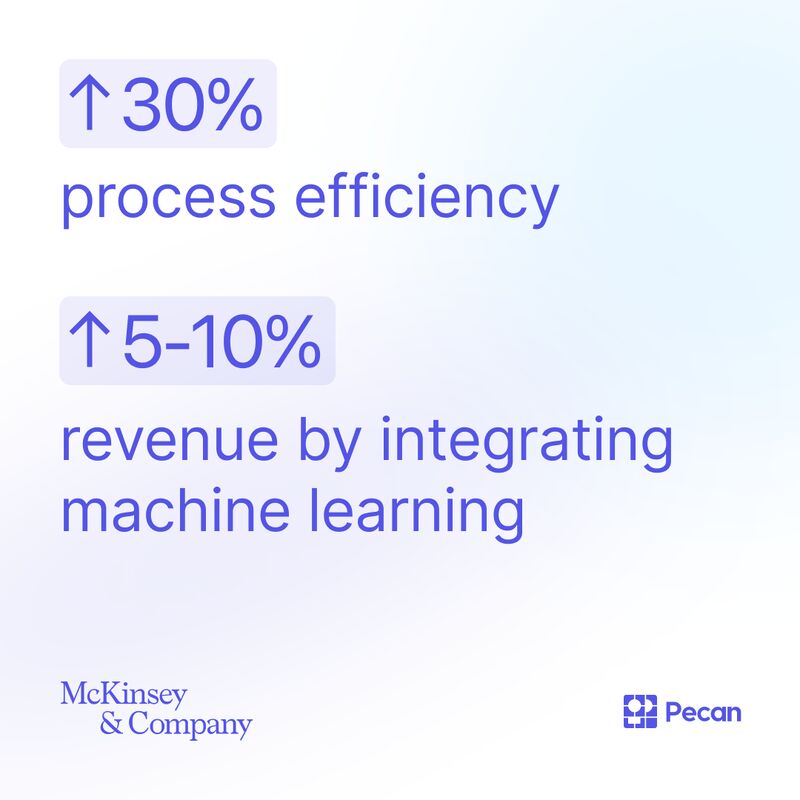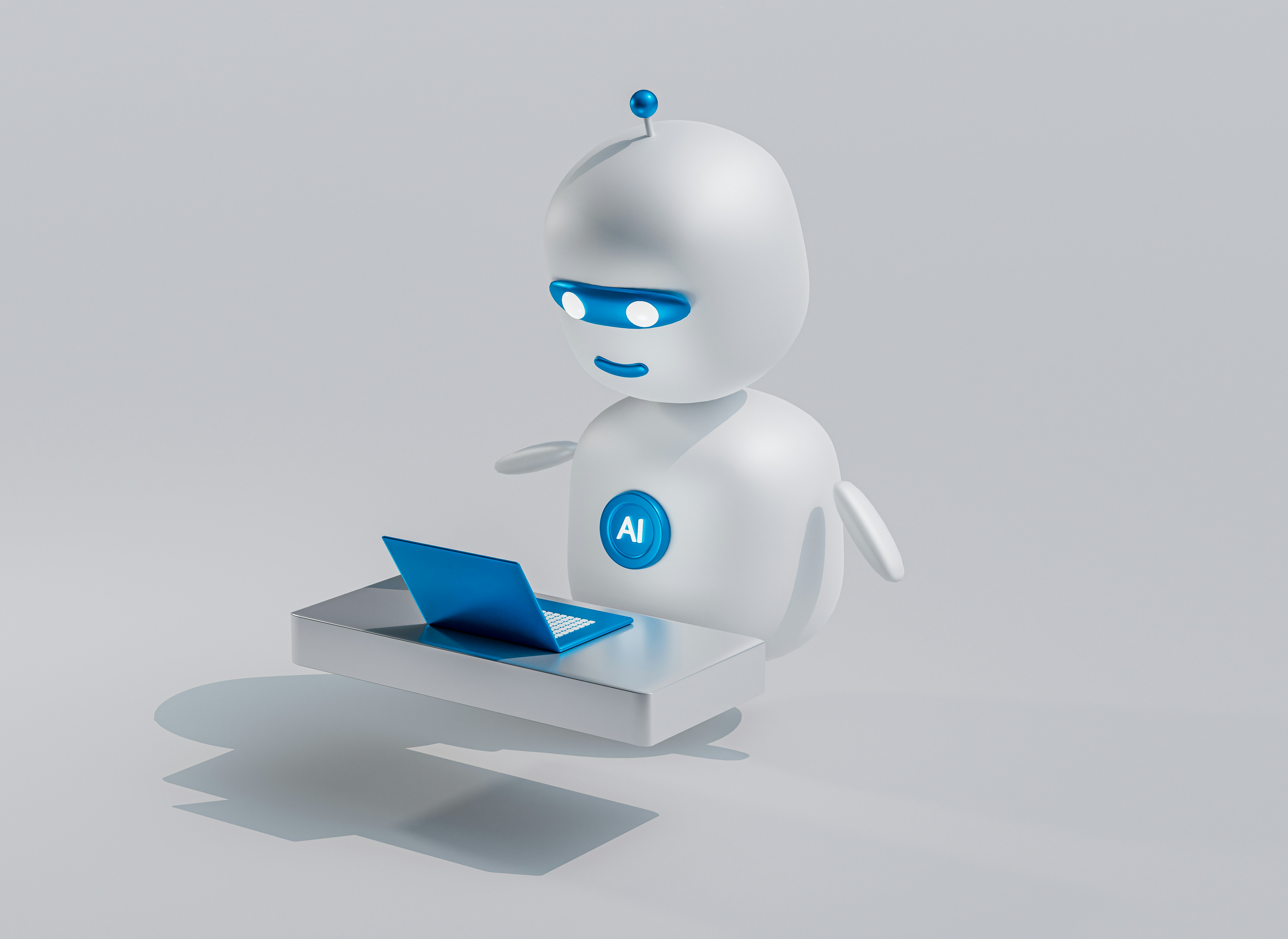In a nutshell:
- AI and GenAI are changing the business landscape by automating tasks, analyzing data, and generating new ideas and solutions.
- AI focuses on learning from data and making predictions, while GenAI can create new and unique solutions based on learned data.
- Businesses can benefit from integrating both AI and GenAI to streamline operations, increase efficiency, and stimulate innovation.
- Predictive AI uses historical data to make predictions, while GenAI can use these insights to generate innovative ideas and solve problems.
- The combination of GenAI and Predictive AI can lead to more robust decision-making, better strategic planning, and increased business agility.
Greetings, fellow Earthlings and future robot overlords! Today, we're diving into the nutty world of GenAI and AI, where algorithms generate humor — and humans groan. Forget about your typical sci-fi visions of serious, world-domineering artificial intelligence. We're here to take a lighter look at the world of silicon brains and computerized wit.
Indeed, you're probably hearing the terms AI and GenAI — short for "generative AI" — used a lot these days. But what do these terms mean, and how can they benefit businesses?
Let's dive into the world of GenAI and AI, exploring their functionalities, differences, and the impact they have on business strategies. Understanding these innovations is crucial for businesses looking to stay ahead in the market and leverage the power of artificial intelligence.
-

- Predictive AI has great potential for improving process efficiency and revenue.
Defining Artificial Intelligence (AI)
Artificial Intelligence, widely known as AI, has made significant strides since its inception. To understand the difference, and more importantly, to get clarity on the meaning of both GenAI and AI more broadly, we first need to understand what AI is and how it functions.
History and Origins of AI
As a concept, AI dates back to the 1950s when John McCarthy, a computer scientist at Dartmouth College, first coined the term. The idea was to create a machine that could mimic human intelligence. Over the years, AI has evolved into various subsets like Machine Learning and Deep Learning, significantly contributing to technological advancement.
What AI Can Do
AI is a broad area of computer science focused on building smart machines capable of performing tasks that typically require human intelligence. These might include understanding natural language, recognizing patterns, solving problems, and making decisions. AI operates on algorithms and uses data to learn and improve over time, thus making it an excellent tool for prediction and analysis.
How AI is Currently Used in Businesses
In the business world, AI has shown its worth in various ways. It has automated routine tasks, delivered personalized customer experiences, and provided insightful data analytics. AI is widely used in areas like customer service (for chatbots), marketing (for predictive analysis), and operations (for automation and streamlining processes).
Pros and Cons of Using AI in Business
While AI offers numerous benefits, it is essential to acknowledge its drawbacks, too. On the positive side, AI can improve efficiency, deliver personalized services, and provide crucial business insights. However, on the downside, it can be expensive to implement, require significant data for effectiveness, and raise ethical concerns related to data privacy and job displacement.
Understanding Generative Artificial Intelligence (GenAI)
Generative Artificial Intelligence, or GenAI, represents a newer wave in artificial intelligence. GenAI is designed to develop new, previously unseen ideas or solutions to given problems. Essentially, it has the potential not just to learn and predict, but also to create, making it a particularly exciting innovation in the artificial intelligence landscape. This distinction forms the crux of the GenAI vs AI debate and has interesting implications for its uses in business.
Insight into the Workings of GenAI
GenAI operates on the principles of generative models, such as large language models, which are a part of machine learning techniques. These models are highly effective in understanding complex patterns and using this understanding to create something new.
Understanding the Role GenAI Plays in Businesses Today
In a business context, GenAI's capacity for creation can serve various needs. For instance, GenAI can handle content generation, create realistic customer avatars based on historical data, design new products based on market trends, assemble visual elements for presentations, or write code or original content like articles and reports. The potential applications are limited only by the amount and quality of data and the ingenuity of the business in applying the technology.
Advantages of Integrating GenAI into Business Operations
From innovative product design to predictive analytics, GenAI can offer a competitive edge to businesses. It enhances creativity, promotes efficiency, and facilitates personalized experiences. GenAI is expected to provide even more exciting opportunities for companies to explore and exploit as it evolves and matures (though you should be aware of some of GenAI's limitations, too).
-

- Which form of AI is best for your business? There are many considerations. (Image source: Mohamed Nohassi on Unsplash)
Comparing GenAI and AI
In the world of artificial intelligence, where countless subsets and versions exist, understanding the differences and capabilities of each is key for businesses aiming to leverage these technologies. Let's dive deeper into comparing Generative AI (GenAI) and traditional AI.
GenAI vs. AI: The Functionality Showdown
While traditional AI interprets input data and provides appropriate responses, GenAI elevates this process by generating new and unique solutions based on the data it has learned. By using generative models, it can create new data points, leading to innovative solutions and ideas. On the other hand, traditional AI focuses on learning from data, finding patterns, and making predictions, which can be particularly useful in decision-making and performing tasks that would otherwise require human intelligence.
When to Use GenAI and When to Use Traditional AI
When choosing between GenAI and traditional AI, it all boils down to the specific needs of the business. If the goal is to automate tasks, optimize processes, or predict trends, traditional AI could be the more suitable choice. However, if a business seeks to create new ideas or solutions, design products based on market demands, or generate realistic customer avatars, GenAI might be a better fit.
The decision doesn’t always have to be an 'either-or' situation. GenAI and traditional AI can also complement each other in various scenarios, such as a mix of predictive modeling (traditional AI) and creative problem-solving (GenAI) to deliver tailored customer experiences or design innovative products.
How Businesses Can Benefit from GenAI and AI
AI and GenAI are instrumental in changing the landscape of business strategies. AI's capabilities to automate tasks, analyze data, and predict trends to help businesses streamline operations, improve business processes, and increase efficiency. On the other hand, GenAI's ability to generate new ideas and solutions stimulates innovation and leads to the creation of new products, services, and business models. Together, they enable businesses to achieve strategic advantages in a competitive market. Current generative AI and other technologies have the potential to automate work activities that absorb 60 to 70 percent of employees' time today, according to McKinsey.
Data is the lifeblood of digital businesses. AI and GenAI play a crucial role in data analysis, enabling businesses to gather insights, identify trends, and make data-driven decisions. Traditional AI excels in analyzing large datasets and unearthing patterns that humans might miss. Meanwhile, GenAI adds another layer of intelligence by helping humans use that data to evaluate potential actions and come up with novel solutions.
Using AI and GenAI for Predictive Purposes in Business
Predictive ability is one of the most appealing aspects of AI and GenAI. AI's predictive analytics capabilities can forecast future events based on past data, allowing businesses to anticipate market changes, identify potential risks, and seize growth opportunities. GenAI takes it a step further by creating new ideas and potential scenarios that help businesses prepare for a wider range of possibilities.
These technologies are not merely tools for businesses; they are transformative forces reshaping enterprises and their strategies. As we step into the future, integrating GenAI and traditional AI into business operations will no longer be an option but a necessity. This shift underscores the importance of understanding the nuances of GenAI vs AI and their potential applications in business.
The Intersection of GenAI and Predictive AI
Another subset of AI that demands attention is Predictive AI. Combining the strengths of GenAI and Predictive AI can present an entirely new landscape of opportunities for businesses.
Understanding Predictive AI
Predictive AI, as the name suggests, uses historical data to make predictions and foresee future events. It interprets patterns in the collected data and makes predictions accordingly. It's widely employed in various industries for initiatives such as sales forecasting, customer behavior modeling, risk assessment, fraud detection, operational efficiencies, and resource allocation.
An Example of Predictive AI in Business
SciPlay, a prominent mobile game publisher, has adopted predictive AI with Pecan's predictive modeling. They've used predictions to enhance retargeting campaigns, ensuring they reach out only to the players who need a nudge to return to playing a game instead of spending money on retargeting campaigns that reach dedicated players.
“We’re able to get much better margins and invest our marketing budgets much, much more wisely with Pecan’s help,” says Evyatar Livny, vice president of marketing technologies at SciPlay.
Predictive models should provide better and better results over time without additional resources. Predictive churn models can continuously learn from customer behavior and feedback, allowing for the refinement of prediction algorithms over time. This iterative approach ensures that resources are allocated more effectively as the models become increasingly accurate. Finally, by reducing churn rates and retaining existing customers, organizations can achieve substantial cost savings that would otherwise be incurred in acquiring new customers.
Predictive churn models play a crucial role in identifying customers who may be nearing the end of their relationship with a company and understanding the reasons behind their potential churn.
How GenAI and Predictive AI Can Work Together
Pairing GenAI with Predictive AI holds immense potential for businesses. Predictive AI can identify patterns and make forecasts based on past data, while GenAI can use these insights to generate innovative ideas and help solve problems that align with these predictions. This combination can lead to more robust decision-making, better strategic planning, and increased business agility.
Real-Life Examples of GenAI and Predictive AI Synergy
Several businesses are already reaping the benefits of combining GenAI and Predictive AI. For instance, in the retail industry, companies use Predictive AI to forecast sales and consumer behavior trends. GenAI then uses this information to generate new marketing strategies or product designs.
In healthcare, Predictive AI can forecast disease outbreaks or patient health risks. GenAI comes into play by creating personalized treatment plans or preventive measures based on these predictions. This improves patient outcomes and healthcare efficiency.
What This Means for the Future of Business
The harmony of GenAI and Predictive AI signifies a future where businesses are efficient and predictive and increasingly innovative and proactive. This synergy could drastically reshape business strategies, leading to novel products and services, superior customer experiences, and unprecedented competitive advantages.
Choosing Between GenAI, AI, and Predictive AI for Your Business
Given the crucial part that AI plays in today's business landscape, deciding between GenAI and traditional or Predictive AI can seem daunting. The choice isn't always clear-cut and depends primarily on your company's specific needs and ambitions. Some key factors to consider when choosing the correct AI tool include your company's business objectives, the tool's unique capabilities, and the nature of the tasks to be automated. Plus, consider the quantity and quality of data available and the budget allotted. The choice isn't always clear-cut and depends primarily on your company's specific needs and ambitions.
Factors to Consider When Deciding on the Correct Tool
Some key factors to consider when choosing the correct AI tool include your company's business objectives and the nature of the tasks to be automated. Plus, consider the quantity and quality of data available and the budget allotted.
The Role of Your Business Goals and Objectives
Your business goals will largely determine the AI tool that will best serve your needs. If your objective is task automation and pattern recognition in vast data sets, traditional machine learning might be the most fitting. If your goal is to derive innovative ideas and solutions based on data you already have, GenAI could serve you best. Suppose your primary objective is to predict future trends based on historical data. In that case, Predictive AI might be the most suitable.
How to Get Started With These Different Forms of AI
When looking to integrate AI into your business, start by identifying key areas where AI can make a significant impact. Once these areas are defined, you can decide which form of AI is most suitable. Many platforms and tools are available for implementing AI in businesses, from open-source software libraries to professional services that can tailor AI solutions to your needs.
Make the Right Decision for Your Business
In the discussion of GenAI vs AI, it's clear that both these technologies are reshaping the business landscape. Their unique functionalities offer a wide range of benefits for businesses, from improving efficiency to sparking innovation. Understanding these technologies and their potential applications can help businesses make the most of this digital era and secure a competitive edge. Businesses should explore these AI tools to leverage growth and prepare for the future. (And if you're not already doing it, rest assured, your competitors probably are.)
Get Started With Pecan AI
If you'd like to learn more about how predictive AI can benefit your business, we'd love to help. Challenge the boundaries of what's possible with AI and GenAI. Reach out to us today for a consultation.




